A live blog of all the action as it happens from Wonkhe’s Counting the Cost event, Tuesday 7 July at Imperial College, London
What happened at Counting the Cost?
Timeline
- Jul 2 2019 16:29
- Jul 2 2019 15:46
- Jul 2 2019 14:29
- Jul 2 2019 13:11
- Jul 2 2019 10:59
- Jul 2 2019 10:12
Highlights
Updates
The future for Augar is political
Jul 2 2019 The future for Augar is politicalIt’s the end of a mammoth day here at Counting the Cost and we are rounding out the discussion with Wonkhe’s CEO and editor-in-chief, Mark Leach. HEPI’s Nick Hillman and Rachel Wolf from Public First join Mark to gaze into the future at what might come next for Augar.
Nick Hillman characterises much of the sector’s reactions as, “depressing,” and is disappointed that many people of influence – including former education secretaries – have disregarded a comprehensive and well evidenced review. Hillman says it is easier to pull apart a complex piece of policy but harder to propose a constructive alternative. He says that the sector and the government must work together to develop solutions to the serious challenges facing the sector.
![]()
Rachel Wolf spoke about the political forces that haven’t changed since the conception of the Augar review and what this means for higher education policy. She explained that the drivers that led to Augar, including the Conservative party’s desire to appeal to young people, the need to address the concerns of “Leave” voters (who, in many instances, may not have benefited from higher education), and the pressures on Treasury to reduce deficit may mean that at least some of Augar’s recommendations are likely to survive a change of premiership. However, Wolf is also quick to point out that for neither Boris Johnson nor Jeremy Hunt, higher education does not feature high on their agenda.
![]()
Both Wolf and Hillman offered some parting advice to the Counting the Cost audience. In a tight economic and political climate, Wolf says that if universities are to ask for more funding, then it must be about “funding not fees.” She said the extent to which universities win depend on the extent to which they are on the side of a voter (as described earlier). Hillman took a different view and made the case that any new investment in higher education must be connected to the agenda of regions (pointing to the example of former universities minister Bill Rammell establishing a university in Bedfordshire, and the University of Lincoln).
Lifelong learning, FE and skills
Jul 2 2019 Lifelong learning, FE and skillsWonkhe’s Rachael Firth introduced our set of speakers, who each gave their take on the impact of the Augar review for FE, skills and lifelong learning in seven-minute TED-style talks.
![]()
“Lifelong learning for the few, not for the many”
Claire Callender of the Centre for Global Higher Education dived straight into the figures on part-time students, explaining that the fall was primarily due to changes in student funding. The two most impactful changes were the introduction of tuition fees and the trebling of the tuition fee cap to £9k in 2012. Claire highlighted statistics which suggest that part-time students were much less likely to take up loans, even where offered, than full-time students.
![]() The Augar recommendations that Claire chose to focus on where the lifelong learning loan allowance for tuition loans at levels 4, 5 and 6 for those aged over 18, student finance (both tuition and maintenance) for learners to study modules of credit-based level 4, 5 and 6 qualifications, and the scrapping of ELQ rules.
The Augar recommendations that Claire chose to focus on where the lifelong learning loan allowance for tuition loans at levels 4, 5 and 6 for those aged over 18, student finance (both tuition and maintenance) for learners to study modules of credit-based level 4, 5 and 6 qualifications, and the scrapping of ELQ rules.Claire said that she was disappointed at the qualification as to who these proposals would apply to – it looks like the group to benefit will be 18 year-olds looking to study at sub-degree level. They will not support the vast majority of part-time students.
She concluded: ”
According to this report, this is lifelong learning is for those who do not already have a degree. It is lifelong learning for the few, not for the many.”
Reductionist thinking
Tim Blackman, vice chancellor of Middlesex University and incoming vice chancellor of the Open University, opened with the critique that the Augar review is full of binaries, and offers win-lose recommendations that consistently contrast higher education with further education. Tim said he would look instead at learning levels.
Tim pointed out that higher education has its own “Cinderella story” when you look at the figures for part-time learners in recent years – Augar does not do a great deal to address the cost barrier for mature and part-time learners, setting England apart from Scotland and Wales.
Tim criticised the review for a selective use of evidence, highlighting in particular its critique that there is an over-supply of less vocational degrees. He does find interesting some of Augar’s proposals to encourage flexible learning, but is concerned about the idea that we should be training for specific technical qualifications as a method of future-proofing. Tim sees study until level 6 as a good method of doing so.
“Augar’s quite good”
David Hughes started off by saying it’s unusual for someone from the FE sector to be talking to a predominantly HE audience – “It’s good that we’re talking about post-18 together”.
The core message of the report – according to both Augar and Theresa May – is to address the disparity between those who attend higher education and those who don’t. David took the audience through some of Augar’s findings on the cuts to funding and subsequent fall in FE numbers, which he joked we might have skipped over.
![]() David stressed that he doesn’t believe we should be taking from HE to fund FE – we should instead be working together to boosting the overall amount of funding available for education.
David stressed that he doesn’t believe we should be taking from HE to fund FE – we should instead be working together to boosting the overall amount of funding available for education.David predicts issues arising from the Treasury, the main point being the likely poor use of LEO data to illustrate wage return on different qualifications. He argued that we should work together as sectors to lobby government for more funding – we shouldn’t be happy with the binary, even if we are on the favourable end of it.
“We are going to talk about FE, aren’t we?”
Jane Baker, the director of Higher Education Qualifications at Pearson, welcomed the Augar review from a position of always having wanted to focus her work on equality of opportunity for all. She quoted Augar’s interview this morning, in which he asked whether we would be talking about further education to suggest that, as a sector, we should be.
Jane is an advocate of reversing the narrative that prevails in England of the idea that you either have a degree or you are seen as having failed to do so. What does the obsession with the “gold standard” of an undergraduate degree say to a student who is studying a level 4 technical qualification?
We must develop a stronger technical system, according to Jane and we need to understand what narrow narratives we might be supporting – for instance, dentistry and veterinary sciences are vocational qualifications, though we might not think so based on the discourse surrounding them.
Jane said that, while she doesn’t advocate the narratives that suggest FE is taking from HE, amid a backdrop of limited investment, we must make certain changes.
“If at first you don’t succeed, you don’t succeed”
Jonathan Michie, the president of Kellogg College, Oxford, expressed his frustration with the Augar report’s lifelong learning recommendations: the policies on lifelong learning that we have in place thus far suggest that the UK is run – at least in terms of education – on the basis that, “if at first you don’t succeed – you don’t succeed.”
The trebling of fees has put off adults from doing courses – and this is what fundamentally needs to be rectified, according to Jonathan. He cites the 1919 report on adult education as the one report he really supports on the topic.
Jonathan highlights that resilience is more important than training people in the technological skills needed today – what is more important is that we have people with the ability to work through technological problems that are as of yet unknown.
![]() In a Q&A session with all of the speakers, there was discussion on whether Augar fell into the trap of being a report based on the right principles which arrived at the wrong prescription for the sectors it aims to serve. David Hughes said that Augar did not get to grips with the needs of the education sector as a whole or, crucially, with how the sub-sectors within it should now begin to work together. He called for an end to the “snobbery” between sub-sectors within education.
In a Q&A session with all of the speakers, there was discussion on whether Augar fell into the trap of being a report based on the right principles which arrived at the wrong prescription for the sectors it aims to serve. David Hughes said that Augar did not get to grips with the needs of the education sector as a whole or, crucially, with how the sub-sectors within it should now begin to work together. He called for an end to the “snobbery” between sub-sectors within education.Claire Callender said that part of the part-time challenge comes from the fact that, in her view, not that many providers – outside of the Open University and Birkbeck – really care about the drop in part-time numbers, which makes it more difficult to express the problems associated with the part-time decline.
TRACing the cost of delivery
Jul 2 2019 TRACing the cost of delivery![]()
Andrew Bush began by explaining the purpose of KPMG’s report on TRAC- the methodology of costing adapted to the higher education sector to understand the costs of research, delivery of courses and more. TRAC allows us to get a representative picture of the costs of different activities carried out by providers, rather than simply calculating the costs of teaching in isolation.
![]() The good thing about the methodology is that its results are broadly comparable – “we are close to comparing apples to apples,” Andrew said.
The good thing about the methodology is that its results are broadly comparable – “we are close to comparing apples to apples,” Andrew said.Andrew took us through the inputs to the TRAC model and how this all fits into the annual process. The methodology was based on submissions for 2016-17 and identified the full economic cost of different courses, the data for which was then used to create data on broader subject groups at a sector level.
Among the report’s key findings are, as might be expected, that provider size and region affect the cost of delivery – London-based providers noted higher costs.
Medical, dental and veterinary science is the subject group with the highest weighted average unit cost by quite a significant margin, and the two lowest weighted average unit cost subject groups are Social sciences, history and economics; and English, law and modern languages.
There are a number of factors that might affect costs on the horizon – these include regulatory changes, pensions, Brexit and future capital expenditures.
Responding to audience questions, Andrew said that it was 50/50 as to whether the 40 institutions who participated responded saying the charge for anything beyond tuition fees, such as accommodation costs, for example. An audience question addressed whether the report considered inflation – Andrew confirmed that respondents’ concerns about recent cost changes not covered in previous were accounted for in the report.
Read more
The full report is here. We also have lots of helpful TRAC coverage on Wonkhe – here is Andrew Bush on TRACing the costs of teaching in higher education, David Kernohan on why we can’t look directly at costs, and David again on the underpinning evidence behind the £7,500 headline tuition fee figure.
The sector’s response
Jul 2 2019 The sector’s responseFollowing the interview between Philip Augar and Mark Leach, the focus of the conversation at Counting The Cost now shifts to building the sector’s response to the Augar review. Joining Wonkhe’s editor, Debbie McVitty for this discussion are an eminent panel of thinkers: Mary Curnock Cook, Andy Westwood and Nicholas Barr.
Andy Westwood argues that the higher education sector hasn’t been well prepared for the recommendations put forward by Augar and his panel. He explains that the sector has still yet to fully embrace the value of further education and laments that it is a shame that the sectors can’t “come together” to deliver what is needed for society. He compares the sector’s unwillingness to do this to the experience of Brexit and the gridlock that the country currently faces. Westwood also finds it ironic that the sector constantly critiques the government for “cherry picking proposals,” yet in the reactions to the Augar review so far from the sector it has taken the exact same approach.
![]()
Mary Curnock Cook challenges the audience to think about how the sector can have a more “imagination conversation” about what a coherent tertiary system looks like and what this could enable the sector to achieve. Cook asserts that “the universities sector takes a lofty view of itself,” which is no longer acceptable if we are to build the workforce and society of the future.
Agreeing with both Cook and Westwood, Nick Barr made a passionate case for the gross inequality between higher and further education. He says that the party was going to stop one day for the universities sector with respect to how they were being funded especially given the declining standing of technical education. On the criticisms that the report has received for not being progressive in nature, Barr refutes this premise. “It is not about whether bits of the Augar review are progressive. It is about considering the report in its totality.” At the expense of an excess focus on graduate repayment, Barr believes that many in the sector have missed out on appreciating the progressive nature of measures including the lifetime learning allowance, modular course delivery, and investing in further education.
The panel were asked what would be the first thing they would want government to do if the next Prime Minister chose to implement Augar in full. Barr believes that it is paramount that the government move away from three year degree to a granular mode of delivery, and therefore funding. For Cook, it begins with an examination of “what exactly is technical education?” and who is best prepared to deliver it. Her rationale for this stems from a belief that higher education should also be in the business of delivering technical education, in fact, some already do. And for Westwood, he return to his original premise: “the sector must come together.”
![]()
Questions from the floor tackled widening participation, whether the Augar review dealt adequately with the devolution agenda and the role of regions (the consensus was that it was too quiet on this front), and whether the Augar panel looked sufficiently at international examples
Philip Augar, in conversation with Mark Leach
Though the report is the work of the entire panel, and supported by a team at DfE, chair Philip Augar is perhaps the figure most closely associated with the recommendations.
He feels that this the first review since Robbins that has looked at tertiary education in the round, rather than focusing solely on HE. The terms of reference required a set of joined up and coherent recommendations. He welcomes the full and rigorous debate (noting that this has in many ways been led by Wonkhe) but feels unable to comment on implementation.
Early, eye-catching headlines focused on a £7,500 headline fee for higher education. Though clear to emphasise that the report deals with many other issues, he was unsurprised that it attracted attention from journalists.
He praised the work of KMPG in supporting a detailed analysis of costs based on TRAC, the panel felt that what was being reported was spending rather than costs – including an element of discretion. The inclusion of a generous margin for sustainability and investment in these figures, alongside other investment in maintenance and contingency, caused them to decide that a figure of £7,500 would cover real costs in many cases. When pressed on the discretionary (or otherwise) nature of the margin, he circled the conversation back to the changes in the sector linked to the increase in funding with the onset of £9,000 fees – causing changes in the practice of provider governance and management. There’s a bottom quadrant (a “significant minority”) of courses and providers where there are more concerns.
A well-run, well-governed university will cope well with changes in income – and this made it clear to the panel that governance and planning became more important with the advent of higher fees and a market for students. Operational gearing comes in to play – making planning a very sophisticated and high-stakes business. When Mark asked about the operational uncertainty that he has become a byword in the sector for (“not his fault”!) he was reluctant to put himself in the shoes of an institutional manager deciding whether to wait for the government implementation proposals or move to protect income now. The next government needs to make clear what it intends to do as soon as it can.
![]() The report pulls back from minimum grade thresholds (itself a Browne recommendation), though the panel gave this careful consideration (though there was, apparently, less discussion of the idea on the panel than there was on Wonkhe). There was a keenness to address a problem in the “lower quadrant”, and the report tries to set the sector a challenge to address these – but leaves the door open for later direct government intervention. The dynamics of a demographic boom mean that such action would run the risk of choking off aspiration among students from disadvantage groups – Philip Augar highlighted the availability of other post-compulsory provision, and the provision of an adult learning loan.
The report pulls back from minimum grade thresholds (itself a Browne recommendation), though the panel gave this careful consideration (though there was, apparently, less discussion of the idea on the panel than there was on Wonkhe). There was a keenness to address a problem in the “lower quadrant”, and the report tries to set the sector a challenge to address these – but leaves the door open for later direct government intervention. The dynamics of a demographic boom mean that such action would run the risk of choking off aspiration among students from disadvantage groups – Philip Augar highlighted the availability of other post-compulsory provision, and the provision of an adult learning loan.However, this loan would not be available to those who have already been through HE – this omission from the recommendation was a realistic effect of the need to keep the deficit falling as a proportion of GDP. The panel were clear that the nature of work was changing – people change jobs more often and the working life is longer.
On the proposal for the removal of funding for foundation years, the panel wanted to promote Access to HE courses as a “better deal” for students and taxpayers. Philip noted that there was flexibility in the recommendation for special cases where a foundation year would be appropriate – but a “learners first” conceptualisation pointed to the greater value of alternative routes.
Mark pressed on the underlying presumption against arts and humanities (the creative arts in particular) that some have detected within the report – and the response focused on analysis of LEO data showing where state subsidies were going (noting the huge difference that the November 2018 decision by the ONS on accounting practices made to the work of the panel). There are some subjects that are getting twice the subsidy (when loan write-offs are included) of STEM subjects, so the top-up of the £7,500 fee should address the economic and social values of particular subjects.
Philip Augar alluded throughout to a need to leave precisely at 12.15, this meant that he was unable to answer audience questions.
How much does it all cost?
Jul 2 2019 How much does it all cost?In this session we took a closer look at the numbers – how much could Augar cost for providers, students, graduates, and the government? Jim Dickinson introduced Gavan Conlon and Maike Halterbeck from London Economics, presenting their model of the total cost of Augar. Their own model focuses on the 2018-19 cohort of English students studying in the UK and EU students studying in England – estimating that the total current cost per cohort is £8,431m.
![]()
Gavan Conlon & Maike Halterbeck, London Economics
London Economics modelled eight core recommendations – the headline tuition fee reduction (and full top up assumed), the reintroduction of maintenance grants, the changes to interest rates, the lower thresholds, the extension off the repayment period and the repayment cap. Adding in these factors brought the cost per cohort up to £9,083m – this was primarily driven by the repayment cap (without this the changes would be cost neutral). RAB would stand at 35% (4% of which would be due to the cap – as 10% of graduates would be expected to repay their full loan).
Maike explained that there is a great deal of uncertainty surrounding the impact for higher education institutions based on where or not there will be an increase in grant funding. Assuming full compensatory Teaching Grant funding in England, institutions in England would be marginally better off, according to London Economics. But, assuming there no offsetting Teaching Grant to make up for the loss in fee income in the devolved nations, institutions in Scotland, Wales and Northern Ireland would be worse off.
![]()
Gavan Conlon said that the reduction in loans and the repayment cap would result in significantly lower lifetime repayments for the highest earners and higher repayments for low-middle income earners, with women particularly affected. In sum, modest and low earning graduates will make larger contributions as a proportion of their lifetime earnings than high earning graduates – so considering the impacts over a whole lifetime, the Augar recommendations would leave us with a less progressive system of student loans.
Gavan and Maike’s blog for Wonkhe breaks down their model in full.
Lorraine Dearden, Professor of Economics, UCL Institute of Education and Centre for Global Higher Education (CGHE)
Lorraine began by expressing broad support for the Augar recommendations, picking out in particular the call to re-introduce maintenance grants:
![]() “Too many people are going to higher education because the up-front support is more generous, not because it’s the right decision.”
“Too many people are going to higher education because the up-front support is more generous, not because it’s the right decision.”Looking at the IFS model of lifetime loan repayments, Lorraine agreed with the London Economics findings that the proposed changes to the loan repayment threshold benefits the highest earning graduates.
Lorraine asked: isn’t there a simpler way to achieve Augar’s objectives? We could target loan interventions at those studying towards professions that need protecting, like teachers and nurses.
David Malcolm, Head of Policy and Campaigns, NUS
Giving the students’ union perspective, David looked at the recommendations including those surrounding maintenance (reinstating maintenance grants, aligning maintenance levels to the national minimum wage and questioning the age limit on access to maintenance loans), household income (increasing thresholds by inflation), and publishing data on accommodations.
David focused on housing costs, looking at average rent by provider type to find that costs across the board are increasing faster than inflation and certainly faster than student support. This means that the amount of money students have to cover other costs is falling year on year.
David argued that maintenance has not been given the same priority as other policy areas and this is a political choice – there has been a greater focus on tuition debt.
Where does it come from and what does it say?
Jul 2 2019 Where does it come from and what does it say?Hello and welcome to our Counting the Cost event.
Our editor, Debbie McVitty kicks off the first session by asking: “where does the Augar report come from and what does it say?”
She reminds us of the broad shift in opinion from “more graduates means wins all round” to “what about the other 50 per cent of young people who don’t participate in higher education?” and contextualises the Augar review against the backdrop of the Tory party Brexit psychodrama.
Team Wonkhe summarises the key problems that the Augar review is seeking to tackle. Associate Editor Jim Dickinson highlights the, “toxicity of the current English higher education system,” in particular the overall decline in post-compulsory education participation, the need to curb the level of graduate debt and to address a college system in decline. David Kernohan walked through the source of evidence that the Augar panel drew upon to frame its analysis, which included international comparisons, analysis of costs of delivery, non-market benefits of post-18 education, and the opinions of students, parents and consumers. David asks the audience to consider whether the evidence that the Augar panel drew upon was the most valuable source of information in digging into the problems facing the system, and therefore, the solutions that the panel proposed.
![]()
Debbie returns to the stage to outline the key conclusions of the report. In addition to reducing student debt through the headline fee cap cut o £7,500, she described that the Augar panel is seeking to bolster the “esteem and parity” of further education estates and delivery, streamline provision at levels four and five qualifications and apprenticeships, and more broadly, join up the post-18 education and skills as a holistic, integrated system.
Wonkhe’s CEO and editor-in-chief, Mark Leach rounds out the opening session with reflections on what influences might shape the response of the higher education sector. He observes an unpredictable political environment that is dominated by the conservative leadership debate and continuing uncertainty around Brexit, the financial circumstances and position of each institution, and balancing the recommendations of the review with other pressing agendas for universities (including the civic agenda, internationalisation, etc).
Next up: how much does the Augar panel’s recommendations cost?
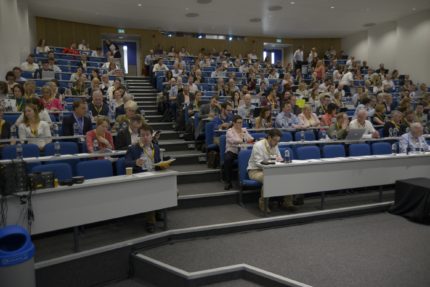
We’re here at Imperial College, London
We’re here at Imperial College, LondonTeam Wonkhe has arrived here at Imperial for our exciting one-day event – we’ll be assessing the impact of the Augar review on higher education and the wider post-18 education landscape, and later there’s a an interview with Philip Augar.
The day will give participants a chance to hear from Team Wonkhe’s experts as well as leading voices from around further and higher education – both to understand the report’s implications and consider the response.
We will demystifying and digesting all the numbers, such as the reduction in the fee cap, the repayment threshold, and assess their impact.
We will digest the impact on the whole post-compulsory education system, lifelong learning, further and higher education and how they relate.
And all of this in the context of a Conservative party leadership race, an impending spending review and a demographic upswing on the horizon.
Where will it take us next? We hope the conference will be part of the building blocks of the response. We’ll be updating this live blog throughout the day.


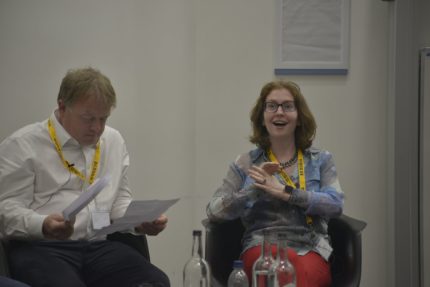
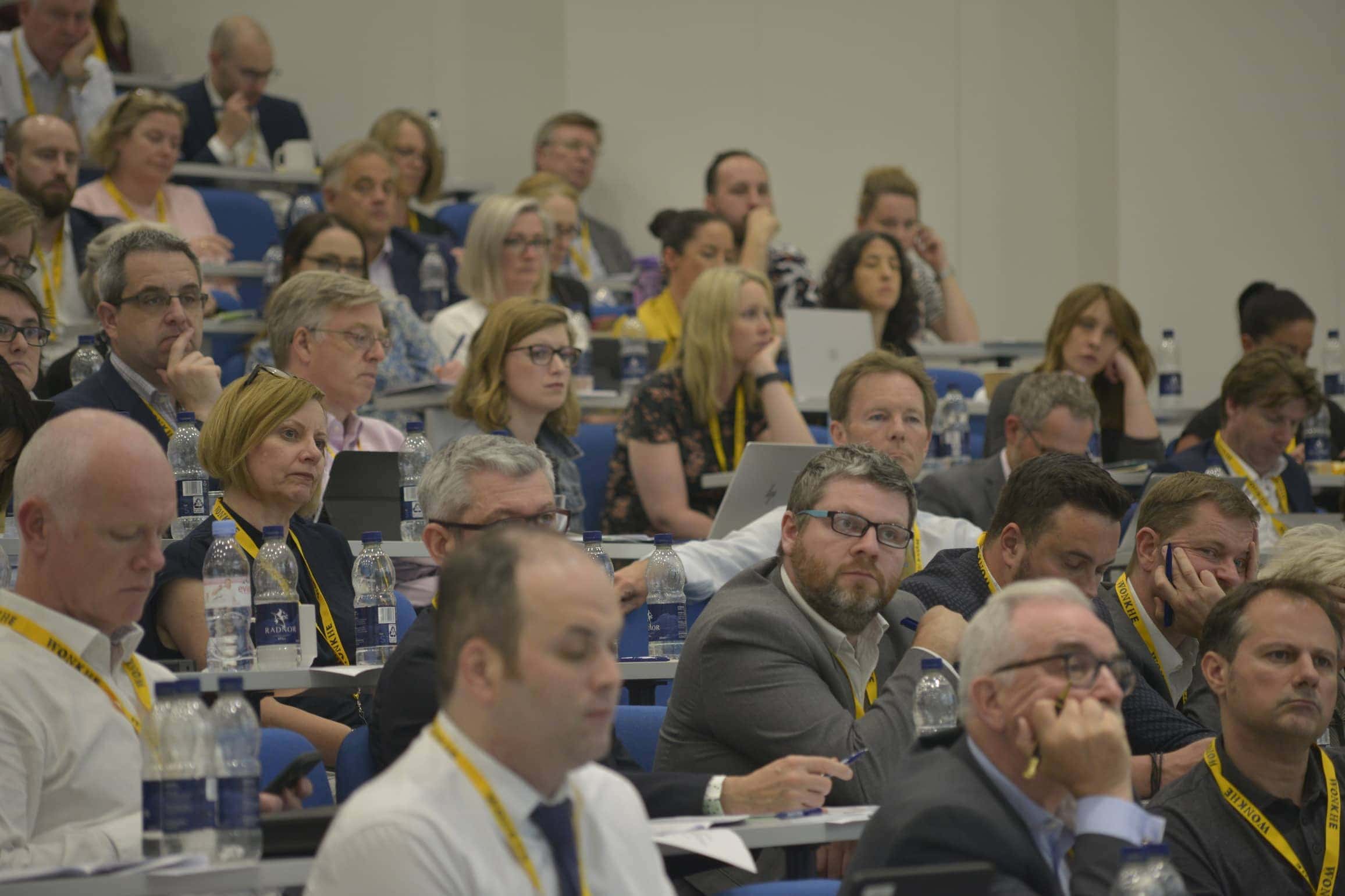
 The Augar recommendations that Claire chose to focus on where the lifelong learning loan allowance for tuition loans at levels 4, 5 and 6 for those aged over 18, student finance (both tuition and maintenance) for learners to study modules of credit-based level 4, 5 and 6 qualifications, and the scrapping of ELQ rules.
The Augar recommendations that Claire chose to focus on where the lifelong learning loan allowance for tuition loans at levels 4, 5 and 6 for those aged over 18, student finance (both tuition and maintenance) for learners to study modules of credit-based level 4, 5 and 6 qualifications, and the scrapping of ELQ rules. David stressed that he doesn’t believe we should be taking from HE to fund FE – we should instead be working together to boosting the overall amount of funding available for education.
David stressed that he doesn’t believe we should be taking from HE to fund FE – we should instead be working together to boosting the overall amount of funding available for education. In a Q&A session with all of the speakers, there was discussion on whether Augar fell into the trap of being a report based on the right principles which arrived at the wrong prescription for the sectors it aims to serve. David Hughes said that Augar did not get to grips with the needs of the education sector as a whole or, crucially, with how the sub-sectors within it should now begin to work together. He called for an end to the “snobbery” between sub-sectors within education.
In a Q&A session with all of the speakers, there was discussion on whether Augar fell into the trap of being a report based on the right principles which arrived at the wrong prescription for the sectors it aims to serve. David Hughes said that Augar did not get to grips with the needs of the education sector as a whole or, crucially, with how the sub-sectors within it should now begin to work together. He called for an end to the “snobbery” between sub-sectors within education.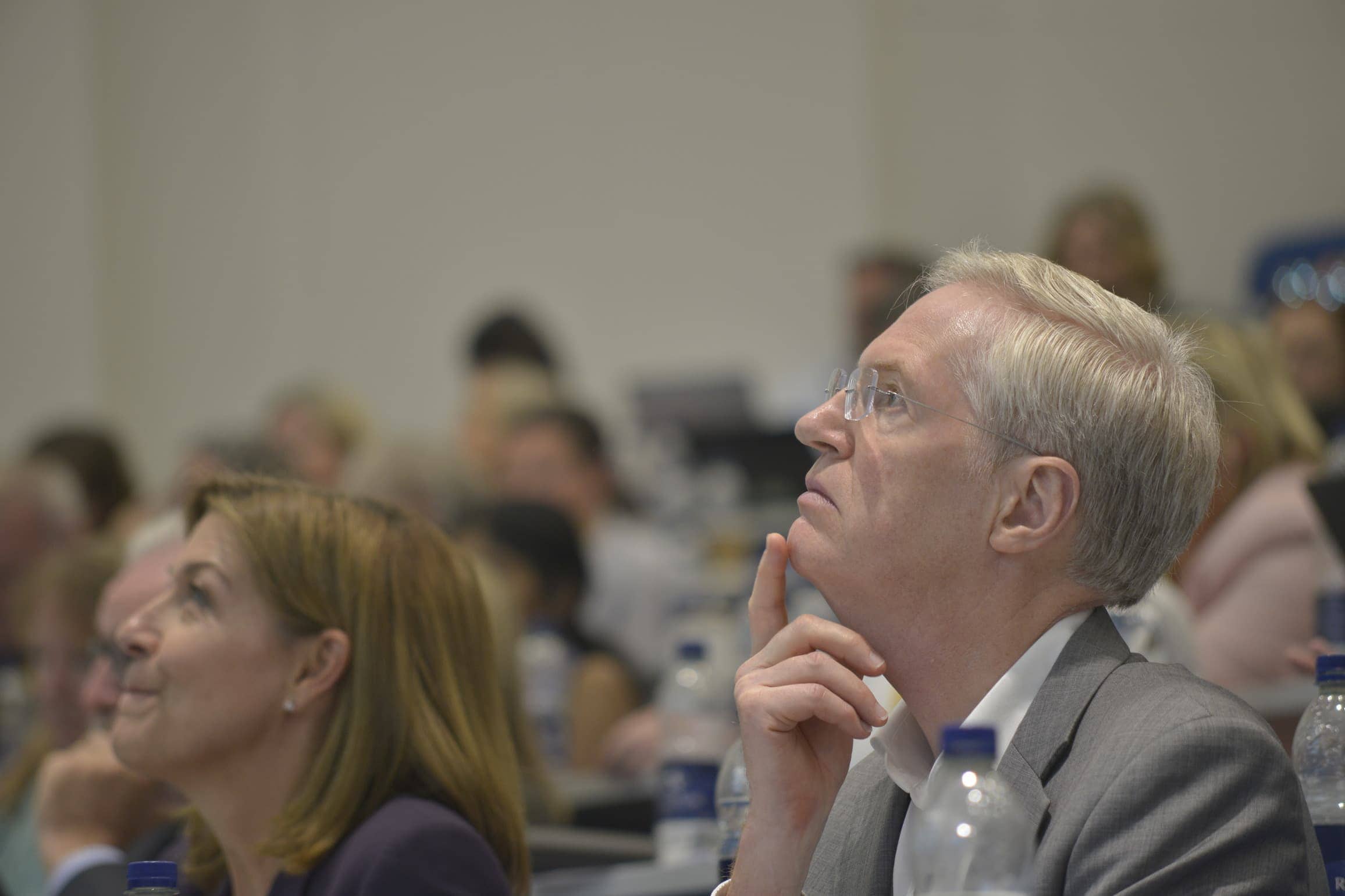
 The good thing about the methodology is that its results are broadly comparable – “we are close to comparing apples to apples,” Andrew said.
The good thing about the methodology is that its results are broadly comparable – “we are close to comparing apples to apples,” Andrew said.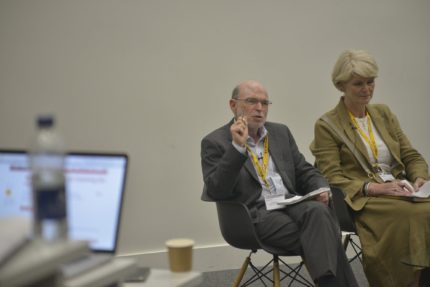

 The report pulls back from minimum grade thresholds (itself a Browne recommendation), though the panel gave this careful consideration (though there was, apparently, less discussion of the idea on the panel than there was on Wonkhe). There was a keenness to address a problem in the “lower quadrant”, and the report tries to set the sector a challenge to address these – but leaves the door open for later direct government intervention. The dynamics of a demographic boom mean that such action would run the risk of choking off aspiration among students from disadvantage groups – Philip Augar highlighted the availability of other post-compulsory provision, and the provision of an adult learning loan.
The report pulls back from minimum grade thresholds (itself a Browne recommendation), though the panel gave this careful consideration (though there was, apparently, less discussion of the idea on the panel than there was on Wonkhe). There was a keenness to address a problem in the “lower quadrant”, and the report tries to set the sector a challenge to address these – but leaves the door open for later direct government intervention. The dynamics of a demographic boom mean that such action would run the risk of choking off aspiration among students from disadvantage groups – Philip Augar highlighted the availability of other post-compulsory provision, and the provision of an adult learning loan.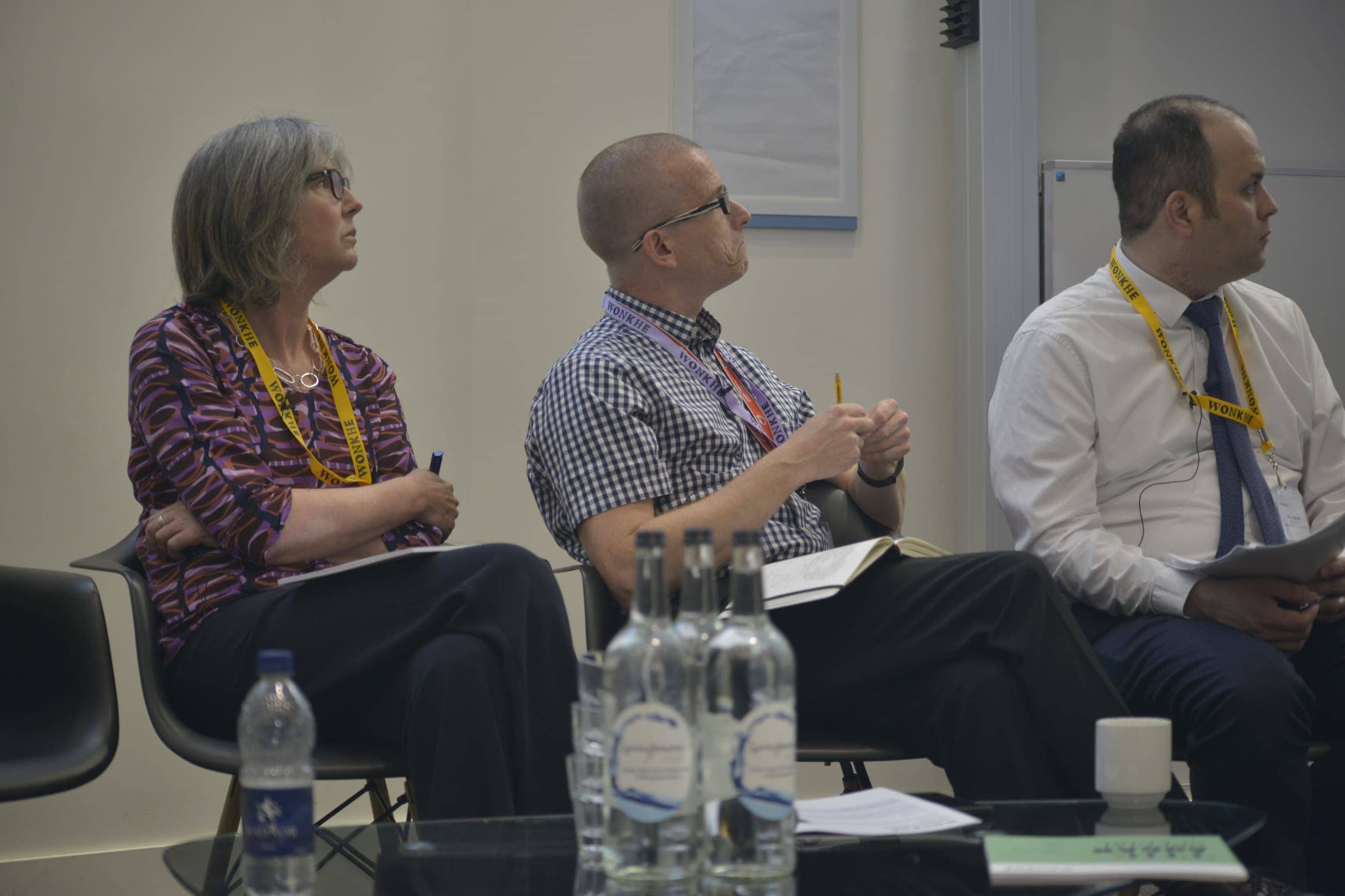
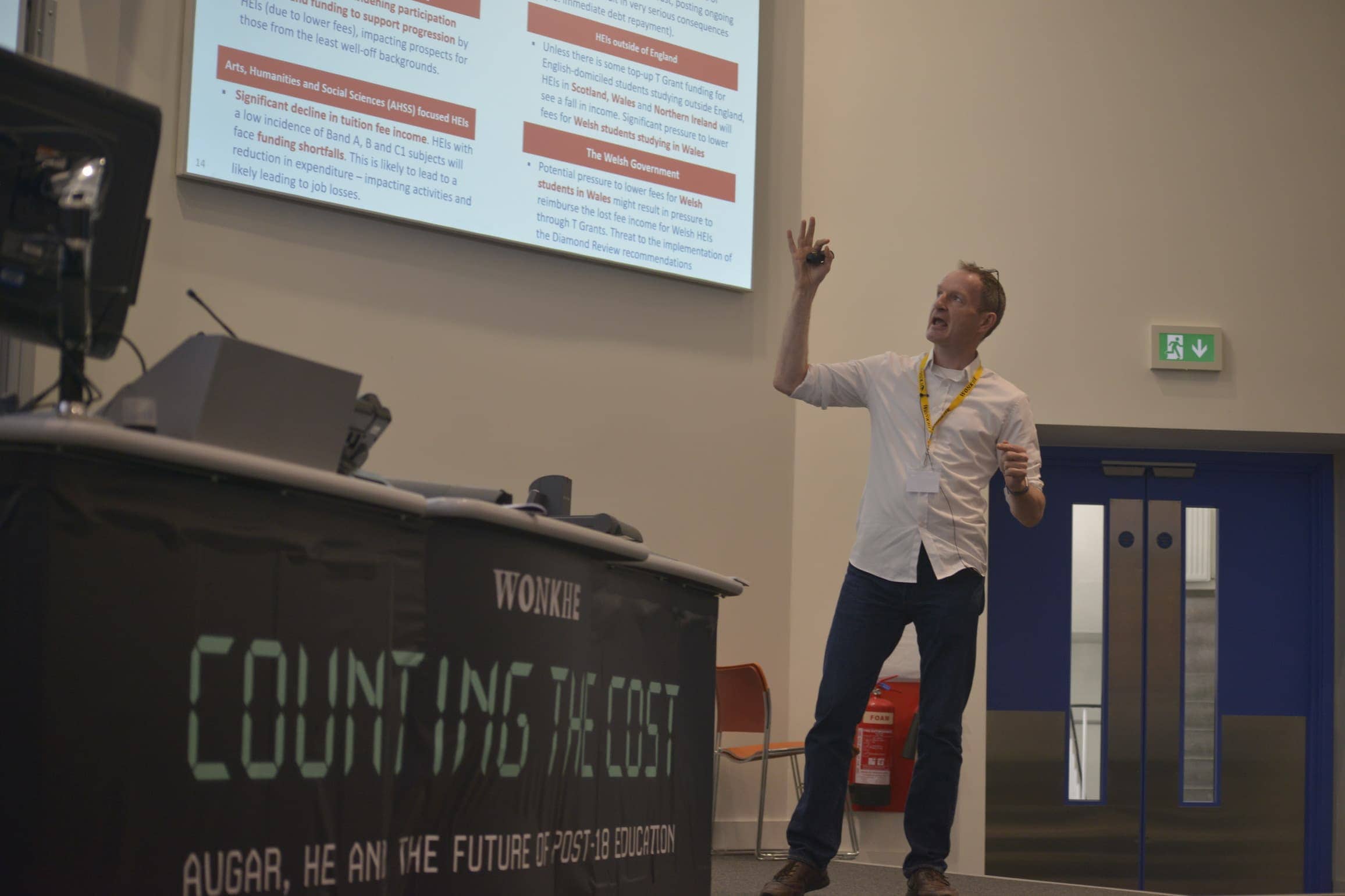
 “Too many people are going to higher education because the up-front support is more generous, not because it’s the right decision.”
“Too many people are going to higher education because the up-front support is more generous, not because it’s the right decision.”